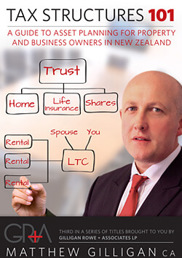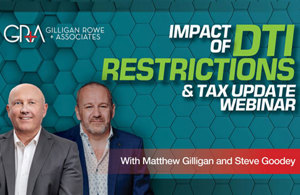
New Zealand has become an attractive destination for foreign investment, particularly in real estate. However, when investing in property in New Zealand, foreign investors must understand the tax framework they are dealing with which, among other considerations, includes the thin capitalisation rules, commonly referred to as ‘thin cap’.
These rules are crucial for anyone considering borrowing to finance their investments, as they affect how interest deductions are claimed and ultimately influence tax liabilities. This guide provides an overview of New Zealand’s thin cap rules, specifically tailored for foreign property investors investing in New Zealand.
For the sake of completeness, the thin cap rules apply to all investments by non-residents in New Zealand and are not limited to just real estate. Further, there are inbound and outbound thin cap rules. This article focuses on the inbound rules that apply to non-residents investing in NZ.
What are Thin Capitalisation Rules?
Thin capitalisation rules are tax regulations that prevent companies or individuals from over-leveraging (borrowing heavily relative to their equity) to minimise their New Zealand tax liabilities. These rules were designed to prevent the transfer of profits out of New Zealand by taxpayers loading up on debt and claiming high interest deductions in New Zealand.
In simple terms, thin capitalisation rules limit the amount of interest expenses that can be claimed when the debt-to-asset ratio is too high. The main aim is to ensure that foreign-controlled entities / foreign investors pay a fair share of tax in New Zealand by limiting their capacity to shift profits overseas.
Why do Thin Capitalisation Rules Matter to Foreign Property Investors?
Foreign investors in New Zealand property may be tempted to use debt financing, as the interest on loans can be deducted from taxable income. However, thin capitalisation rules could limit the ability to deduct these interest expenses if the debt level is deemed too high.
For instance, if a foreign investor finances a property purchase with a significant debt (whether that be from a foreign or NZ bank), they might face restrictions on their interest deductions under the thin cap rules. It’s essential for investors to understand how much debt is permissible without triggering a reduction in deductible interest.
Who is Affected by Thin Capitalisation Rules?
Thin capitalisation rules generally apply to:
1. Foreign-controlled New Zealand companies where 50% or more of the control is held by a non-resident entity / individual(s)
2. Trusts that own New Zealand property where 50% or more of the value of settlements made have come from non-residents
3. Non-resident individuals who own New Zealand property
Key Thresholds and Limits
Under New Zealand law, a foreign-controlled entity or non-resident investor can generally deduct interest provided their debt ratio doesn’t exceed the following thresholds:
- 60% Safe Harbour Ratio (NZ specific ratio): Provided the debt ratio does not exceed the 60% debt-to-asset threshold, the foreign entity / individual can claim interest deductions in full. For instance, if the total assets are worth NZD 1 million, debt levels up to NZD 600,000 would typically enjoy full interest deductibility.
- 110% Safe Harbour Ratio (Worldwide ratio): The 110% worldwide debt-to-asset ratio threshold is an alternative test used by multinationals. This test allows a New Zealand entity to claim interest deductions on debt up to 110% of the debt-to-asset ratio of its worldwide group. For example, if a multinational group has a worldwide debt-to-asset ratio of 70%, then a New Zealand subsidiary or branch of this group can apply the 110% worldwide test, allowing a debt-to-asset ratio of up to 77% (i.e. 110% of 70%).
If the New Zealand entity’s debt-to-asset ratio exceeds both of the above thresholds, the excess portion of interest expense is disallowed as a deduction.
It is worth noting that individuals and look-through companies with shares held by individuals are limited to only the 60% safe harbour ratio calculation.
Calculating the Debt-to-Asset Ratio
At risk of oversimplifying the thin capitalisation calculation, the debt-to-asset ratio is calculated by dividing the total interest-bearing debt by the total assets of the investor.
For example: If a non-resident owns a property worth NZD 2 million with NZD 1.2 million in debt, the debt-to-asset ratio would be 60% (1.2m debt / 2m assets).
The calculation of these rules is more complicated than mentioned and there are various non-debt liabilities that are excluded from these calculations. We recommend that a professional tax adviser who is experienced with the thin capitalisation rules undertake these calculations for you.
Steps for Foreign Property Investors to Comply with the Thin Capitalisation Rules
1. Assess the investment structure: Foreign investors should consult a tax professional to structure their investment appropriately. Holding property through a New Zealand-incorporated entity offers different tax treatments than individual ownership.
2. Monitor debt levels: Stay within the or 60% and 110% (if applicable) debt-to-asset ratio limits to maximise interest deductions.
Conclusion
Thin capitalisation rules play a significant role in ensuring New Zealand’s tax base is not eroded by forcing foreign investors to maintain a fair balance of debt and equity in their New Zealand investments. By understanding and adhering to these rules, foreign investors can better manage their tax liabilities and optimise their investment structure.
Given the complexities involved, consulting a New Zealand tax adviser is prudent, to ensure compliance and to make the most of any available tax benefits. If you'd like help with thin capitalisation rules, contact GRA to see how we can assist - the first meeting is free for new clients.

Quade Fraser
Client Services Manager
Did you like this article? Subscribe to our newsletter to receive tips, updates and useful information to help you protect your assets and grow your net worth. We're expert accountants providing expert advice to clients in NZ and around the world.
Disclaimer: This article is intended to provide only a summary of the issues associated with the topics covered. It does not purport to be comprehensive nor to provide specific advice. No person should act in reliance on any statement contained within this article without first obtaining specific professional advice. If you require any further information or advice on any matter covered within this article, please contact the author.
Comments
Testimonials
I would just like to reiterate how much I got out of property school 101, not just about property but planning and making informed decisions on money matters. I found you very inspiring and enjoyed the energy in which you presented with. I am definitely at a point now where I just want to start making things happen – the right way! Kindest Regards - André
Gilligan Rowe and Associates is a chartered accounting firm specialising in property, asset planning, legal structures, taxation and compliance.
We help new, small and medium property investors become long-term successful investors through our education programmes and property portfolio planning advice. With our deep knowledge and experience, we have assisted hundreds of clients build wealth through property investment.
Learn More








































